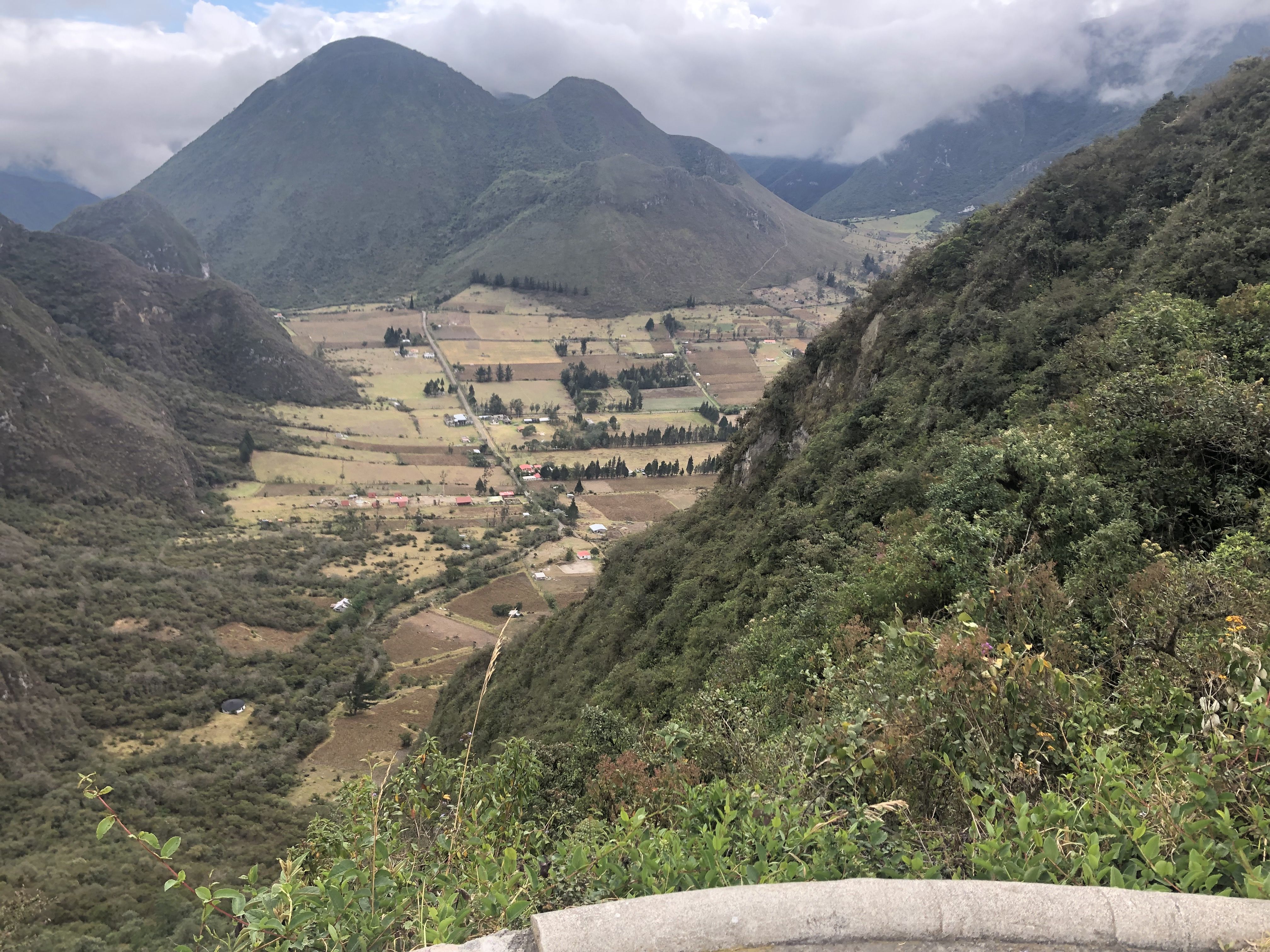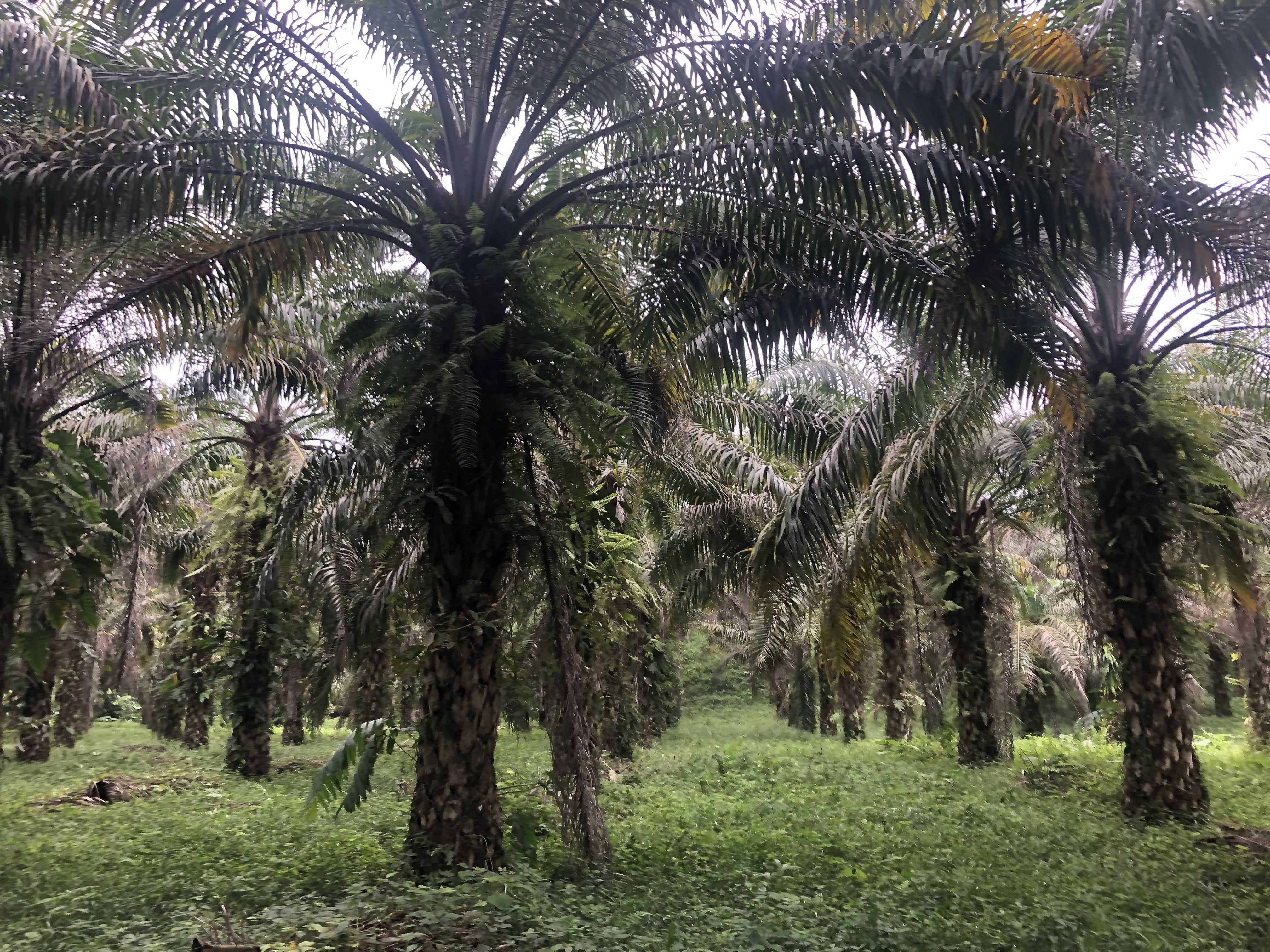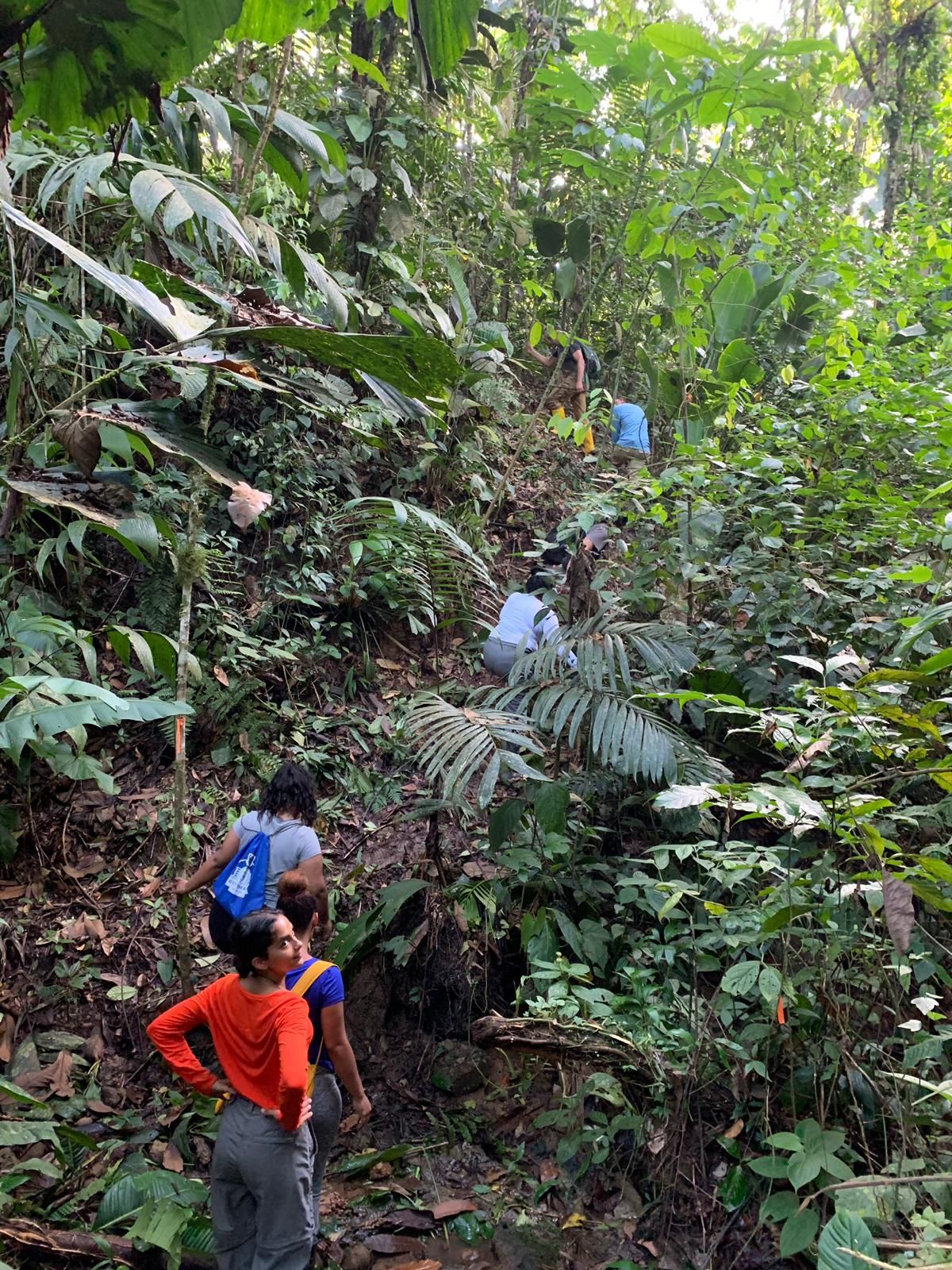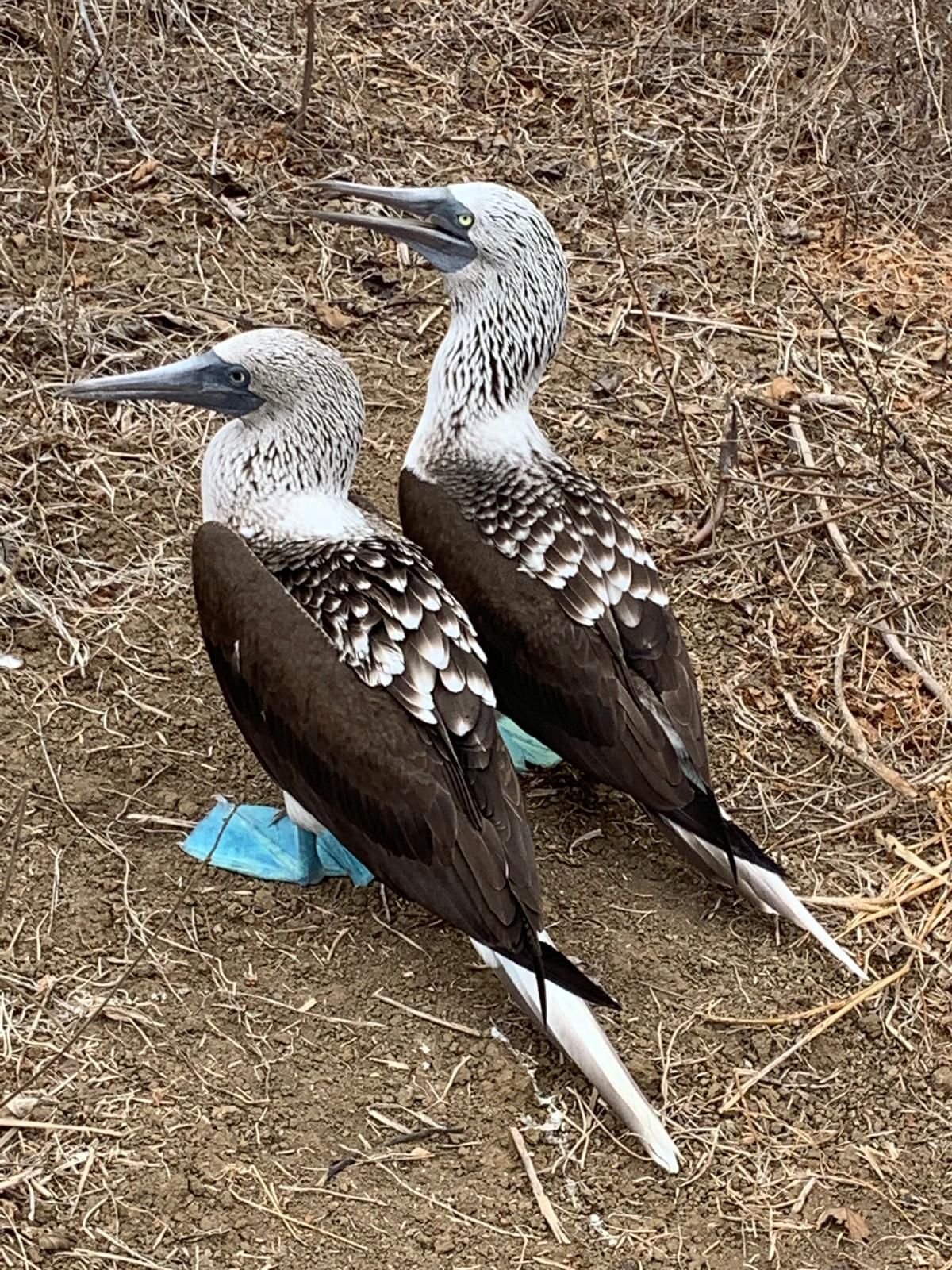"My dream is to live in a world in harmony with Nature, to leave clean water and pure air to the future generations, to use only what we need and to return 10 times what we use, to bury consumerism and live in a sustainable way, to spend the rest of my life contemplating the wonderful world of Nature without worrying about how long that beauty will last," says Raul Nieto, the founder of the Itapoa Project, a conservation initiative in northwest Ecuador.
Nieto has experienced firsthand all the destruction that has taken place in the Chocóan tropical rainforest of Ecuador. The Itapoa reserve is located about 10 miles into the lush rainforest. For decades Nieto has led both volunteers and students to the reserve in order to see the true equilibrium the earth has to offer. The Itapoa Project also recognizes the cultural importance of protecting the Chocó.
Without the free ecological services the Chocó produces, the culture of the Indigenous populations would disappear. This realization inspired Nieto to create a School of Traditional Music from the Region of Ecuador located in Cabuyal, Pichincha, Ecuador. Nieto has taken it upon himself to protect and rehabilitate the Chocó by finding the link between conservation, community, and culture.
The Undercover Villain
African palms produce the most consumed edible oil on a global scale. Since 1995, the consumption of palm oil has increased by about 46.5 million tons worldwide. Even if you’ve never heard of African palm oil, chances are you will find it in a handful of your household essentials at this very moment. Palm oil can be found in everything from chocolate to shampoo; it is used in almost everything because of how easily it is extracted when compared to other vegetable oils.
However, the demand for palm oil continues to play a huge role in the degradation of ecosystems such as tropical rainforests in Ecuador and other equatorial countries.
The Chocóan Rainforest is one of the last coastal rainforests left on earth; it stretches from Panama down through Colombia, all the way into Northern Ecuador. The Chocó has been named one of the world’s last biodiversity hotspots—it has a huge range of diversity in the species that live there, while many are endangered or threatened. Although it is considered one of the most biodiversity hotspots, human impact has left only about 2 percent of the Chocó’s primary forest untouched. These human activities include illegal logging, illegal farming, overfishing, hunting, population growth, and other social interferences such as sound pollution.
According to the Critical Ecosystem Partnership Fund, a wide variation in ecosystems exists within the Chocó, allowing for a wide variety of endemic and rare species. The Chocó is home to about 9,000 vascular plant species, with about 25 percent being endemic to that area. Due to its range of plant and wildlife, many conservation projects are devoted to protecting what is left of the Chocó.
All over the world, great tropical forests and other fragile ecosystems have been cleared in order to create large scale African palm plantations. According to the Roundtable on Sustainable Palm Oil, there are approximately 3.95 million hectares of certified palm plantations, which only makes up for about 19 percent of the global production. The same is evident within the Chocóan Rainforest; a stunning percentage of the forest has already been destroyed by deforestation and palm oil expansion leaving only about 2 percent intact according to Critical Ecosystem Partnership Fund.
In 1986, Bruce Cabarle, leader of WWF’s Global Forest and Climate Initiative, confirmed that Ecuador consisted of about 25 million hectares of primary rainforest before human impact.
For decades, humans have been going into the Chocó and draining it of its natural resources, which ultimately causes a decrease in biodiversity and interferes with the ecological equilibrium that is in place. When these systems are interrupted, it can have grave and dramatic effects on the free ecological services that the environment has to offer. These ecological services offer vital tools for supporting human life, everything from oxygen emission through plant life to cultural and recreational benefits. Those responsible for the destruction of the Chocó may not even be aware of their role in the process.
Participatory Conservation and Chocolate
Although humans are the root cause of the damage to the Chocóan rainforest, many groups have made it their goal to stop the destruction taking place. Groups such as the Itapoa Project, Proyecto Washu, and protected areas such as Machalilla National Park have made huge strides in their fight against deforestation and the decrease of biodiversity throughout Ecuador. Through means such as participatory conservation, these groups have been able to educate and support the communities that live within or near an area with intact forests and other vital ecosystems.
The Itapoa project, started in 1989, has made efforts to both stop deforestation while also replanting and protecting land that has been affected by human impact. Itapoa is a privately owned reserve that has been left virtually untouched and left to grow and exist naturally. Not only does Itapoa try to rebuild the Chocó, but they also reach out to the community to teach them about the harmful effects of logging and how to grow crops that are endemic and more sustainable than African palm. Cacao has been the main crop for the Itapoa project; all of the groups involved maintain their crops without the use of pesticides. By growing and selling high quality Ecuadorian chocolate, these communities are able to support themselves.
“Today, tourism has been transformed into one of the most shocking activities on the planet. The ecological footprint that leaves each individual who moves from one place to another is incredibly immense,” says Nieto, biologist and Itapoa project director, who gives public speeches in the United States and Europe about the harm to the Chocó that has resulted from ecotourism and illegal activity.
By creating awareness of this issue and the importance of this vital ecosystem, Nieto hopes to help protect more land.
Nieto also leads groups into the Itapoa Reserve to give individuals a look into the beautiful ecosystems that are lost to logging and the growth of unsustainable and invasive crops.
“Participatory conservation consists of working hand in hand with the communities that live in highly biodiverse areas to protect their territory,” says Sylvana Urbina, Director of Jevon Biological Station, which offers guided visits into Jevon’s Forest, a protected reserve within the Chocó. This can only happen if we as scientists or conservationists take the time to understand the local context and the reasons why these communities might be harming their own environment. It is also fundamental to listen to what [the] communities have to say and learn from their knowledge.”
Proyecto Washu is an Ecuadorian organization that was started in 2011; its main goal is to research and help protect the endangered brown-headed spider monkey. Proyecto Washu also uses community outreach techniques to spread awareness about this awesome endangered species. The brown-headed spider monkey is one of the top 25 most endangered primate species on earth—they are endemic to the Chocóan rainforest.
Proyecto Washu focuses their work in the Chocó located in the Esmeraldas Province of Ecuador, which is a critical area for the survival of the brown-headed spider monkey. The critical status of the species sparked the need for a project that is able to integrate research, conservation, and community-building in order to have the people in the area come together to reach a common goal. Washu also took charge of the Jambelí Ecological Rescue Foundation in 2014, where they house and rehabilitate primate species in hopes of releasing them into their natural habitats.
The organization also produces Washu Chocolate, which is offered in a range of flavors, all with information about different endangered species living within the Chocó on 100 percent biodegradable packaging.
“Empowered and independent communities is our objective,” says Urbina. The profit made from the chocolate goes back into the rehabilitation centers and other ecological programs. Although Proyecto Washu’s main goal is to protect one specific species and its habitat, it helps support the overall equilibrium of the entire ecosystem.
Isla de la Plata and Los Frailes
Machalilla National Park is the largest protected coastal area in all of Ecuador. The park consists of many islands, including Isla Salango, Los Frailes Beaches, and Isla de la Plata. These islands are vital ecosystems to many species of famous birds such as frigate birds and blue-footed boobies. The forests in Machalilla National Park are considered dry tropical or fog forests. Tour guides lead groups from the mainland to Isla de La Plata in boats coming out of Puerto Lopez, and during the months of June to September whale watching can be enjoyed on the way. The tour guides are passionate about conservation and talk about the origins of the island and the species that inhabit it. Guides speak about small conservational goals the park has reached since the area was named a protected area, such as the eradication of invasive species putting a strain on the equilibrium of this island.
The Los Frailes beaches are also protected because they are an important nesting ground for many species of birds affected by the heavy traffic of ecotourism. Ecotourism has had adverse effects on many vital ecosystems in Ecuador. The lack of knowledge and respect for these areas had led to the depletion and exploitation of communities such as Puerto Lopez.
Puerto Lopez is a prime example of how ecotourism can actually do more harm than good when it comes to the education and preservation of an ecosystem. The only legal way to get to Isla De La Plata is through Puerto Lopez. This has allowed for many small hostels and hotels to take over the beach fronts. In recent years many bars and restaurants have opened along the beach, which contributes to the sound, light, and actual pollution. This addition of loud music and flashing lights disrupts the communication of many different species such as birds and turtles who rely on natural moonlight to navigate.
Participatory conservation has become a common trend throughout many of the conservation efforts in Ecuador. Not only making changes, but teaching communities how to be a part of that change, has allowed these groups to make such dramatic strides in their conservation goals. Whether it is saving the rainforest, or the monkeys, or preserving protected areas, participatory conservation has allowed these groups to spread and raise awareness. Since the Chocó is considered one of the most biodiverse ecosystems left on Earth, it is of the utmost importance that it be both studied and protected.
In the same way that Machalilla National Park teaches visitors about human impact, we must educate people about this immensely biodiverse region.
Education is key to building a common understanding of why and how areas like this have to be conserved and what catastrophic effects could take place if they are not. Not only would there be a decline in biodiversity and a loss of many endangered species, but it would have dramatic effects on the people and communities in the region and even on a global scale. We must all take responsibility for the destruction being done to all biodiverse ecosystems on Earth in order to protect and rebuild them. “Participatory conservation seeks to understand the context and develop solutions to environmental problems with the community as (the) main actors, through dialogue and construction of common ideas,” says Urbina.












